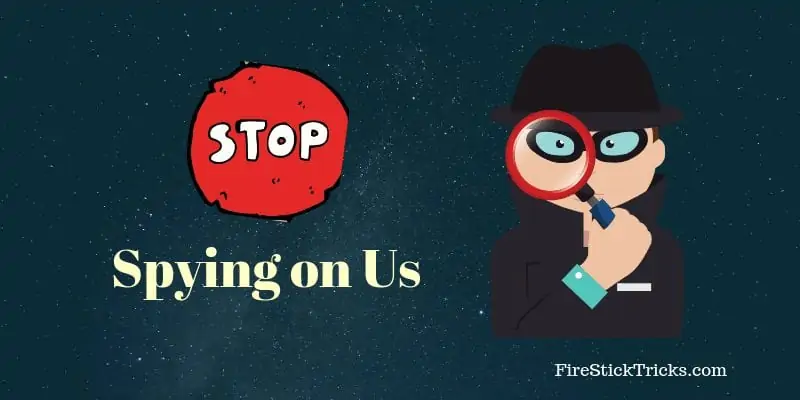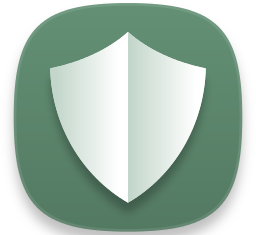Government surveillance has quietly grown into one of the biggest threats to digital privacy. Intelligence agencies across the US, UK, and Canada now monitor millions of communications daily through sophisticated programs most people have never heard of. While this surveillance operates under the banner of national security, it often sweeps up ordinary citizens’ private data without warrants or oversight.
Here’s what you need to know about how these programs work — and how a VPN can help protect you.
Disclaimer: FireStickTricks.com has not conducted any independent research on this topic. This article compiles information that is publicly available on the internet from credible news sources, court documents, government reports, and privacy organizations.
What Is Government Surveillance?
Government surveillance involves intelligence agencies monitoring, collecting, and analyzing digital communications and metadata. This isn’t just about wiretapping specific suspects anymore. Modern programs use “bulk collection” to gather massive amounts of data from internet traffic, phone calls, and emails flowing through major telecommunications networks.
The process typically works through lawful interception — where telecom companies are legally required to provide access to customer data. Intelligence agencies also collaborate directly with tech companies to access user information stored on their servers.
Metadata vs. Content: While agencies claim they don’t always read your messages, they collect metadata — information about your communications like who you contacted, when, where you were, and how long you talked. As one Canadian watchdog noted, metadata “can reveal the most intimate aspects of a person’s private life.”
The Five Eyes and Seven Eyes Alliances
The foundation of modern surveillance cooperation lies in the Five Eyes alliance — a secret intelligence partnership between the US, UK, Canada, Australia, and New Zealand. This alliance grew from the 1946 UKUSA Agreement and enables “unrestricted” sharing of intelligence between member countries.
According to Privacy International, “each of the Five Eyes states conducts interception, collection, acquisition, analysis and decryption activities, sharing all intelligence information obtained with the others by default.”
The Seven Eyes alliance expands this network to include France and the Netherlands, while a broader “14 Eyes” arrangement encompasses additional European countries. These partnerships allow countries to circumvent domestic surveillance restrictions by having allies spy on their citizens instead.
How the Alliance Works: Each country takes lead responsibility for monitoring different global regions. The US focuses on China, Russia, and the Middle East, while the UK monitors Europe and Hong Kong. Canada watches parts of Russia and Latin America. This division of labor creates a comprehensive global surveillance network.
US Surveillance Programs: PRISM and Beyond
PRISM: The NSA’s Digital Dragnet
PRISM is “the number one source of raw intelligence used for NSA analytic reports” and accounts for “91% of the NSA’s internet traffic acquired under FISA section 702 authority.” This program, revealed by Edward Snowden in 2013, allows the NSA to collect emails, chat messages, videos, and photos directly from major tech companies including Google, Facebook, Apple, and Microsoft.
The program operates under the Foreign Intelligence Surveillance Act, which allows surveillance of foreign targets. But here’s the catch: Americans regularly communicate with people overseas, and the government uses “PRISM as a backdoor into Americans’ private communications” through systematic “backdoor searches.”
Room 641A: Tapping the Internet’s Backbone
In 2006, former AT&T technician Mark Klein exposed one of the most shocking surveillance revelations: Room 641A. This “telecommunication interception facility operated by AT&T for the U.S. National Security Agency” contained equipment “designed to intercept and analyze Internet communications at very high speeds.”
Klein revealed that “the NSA is getting everything. These are major pipes that carry not just AT&T’s customer traffic but everybody’s.” The room used fiber optic splitters to copy all internet traffic flowing through AT&T’s network, giving the NSA access to millions of communications.
This wasn’t an isolated facility. Documents later revealed that AT&T’s relationship with the NSA has expanded to “eight AT&T spy ‘fortresses'” across major US cities, creating a nationwide surveillance infrastructure.
UK Surveillance Programs: GCHQ’s Mass Interception
Tempora: Britain’s Internet Vacuum
The UK’s GCHQ operates Tempora, a program that “secretly intercepting millions of people’s private communications, even when those people were clearly of no intelligence interest.” By tapping fiber optic cables entering the UK, GCHQ can store internet content for three days and metadata for 30 days.
European Court Ruling: Surveillance Violated Rights
In a landmark 2021 decision, the European Court of Human Rights ruled that the UK government’s bulk interception powers “did not contain sufficient ‘end-to-end’ safeguards to provide adequate and effective guarantees against arbitrariness and the risk of abuse.”
The court found that GCHQ’s surveillance programs violated “the rights to privacy and freedom of expression” because they lacked proper independent oversight and authorization procedures.
Despite this ruling, the UK continues to operate bulk interception programs, though civil rights groups note “the government’s signals intelligence agency, GCHQ, faces a landmark legal challenge to its mass surveillance programme.”
Canada’s Role in Five Eyes Surveillance
CSE Metadata Collection Troubles
Canada’s Communications Security Establishment (CSE) has faced repeated controversies over privacy violations. In 2016, the CSE commissioner revealed that the agency “illegally and unintentionally shared metadata with Canada’s Five Eyes intelligence allies” for years.
A 2015 review found that “CSE had violated Canadian law, including the NDA and the Privacy Act” when its automated sharing systems sent Canadian information to Five Eyes partners “from 2009… to spring 2014.”
Federal Court Rebuke
In 2013, Canadian federal judge Richard Mosley “strongly rebuked the CSIS for outsourcing its surveillance of Canadians to overseas partner agencies,” asserting that Canadian agencies “have been illegally enlisting FVEY allies in global surveillance dragnets.”
Despite these legal setbacks, Canada has resumed sharing metadata with Five Eyes partners after implementing new privacy controls, though the agency still logged “137 ‘privacy incidents’ in 2022.”
Why Intelligence Alliances Matter
The Five Eyes structure creates a troubling loophole in privacy protections. While most countries have laws restricting domestic surveillance, these partnerships allow agencies to spy on each other’s citizens and share the results. This creates “parallel surveillance frameworks with double-standards” that bypass “domestic legal restrictions on state surveillance.”
The alliance also enables massive data sharing without meaningful oversight. Privacy International notes that Five Eyes countries have “integrated programmes, integrated staff, integrated bases, and integrated analysis.”
Fighting Back: Privacy Advocates and Their Mission
Edward Snowden’s Ongoing Privacy Campaign
More than a decade after his revelations, Edward Snowden continues advocating for digital privacy rights. In a 2019 interview with The Guardian, Snowden said, “we live in a better, freer and safe world because of the revelations of mass surveillance.”
Snowden argues that mass surveillance fundamentally undermines democracy, even when conducted with good intentions. He emphasizes that privacy isn’t about hiding wrongdoing—it’s about preserving the space for dissent, creativity, and human dignity that makes democratic society possible.
His recommended privacy practices include using encrypted messaging apps, browsing with Tor, and supporting organizations that challenge surveillance overreach through courts and legislation.
Privacy Organizations Leading the Fight
Electronic Frontier Foundation (EFF): The EFF has been at the forefront of legal challenges against mass surveillance. They represented AT&T whistleblower Mark Klein in exposing Room 641A and continue pushing for surveillance reform. The EFF notes that the law authorizing PRISM surveillance “expires in early 2026” and they’re working to prevent its renewal without major reforms.
The organization provides practical privacy tools and guides, including recommendations for secure communications, browser privacy settings, and digital security training for activists and journalists.
Privacy International: This organization has been instrumental in challenging Five Eyes surveillance through international courts and advocacy. They’ve written to intelligence oversight bodies in over 40 countries outlining human rights challenges posed by intelligence-sharing agreements.
Privacy International emphasizes that governments must “extend domestic and international constraints applicable to state surveillance to international intelligence-sharing agreements” to prevent parallel surveillance frameworks that bypass legal protections.
Amnesty International: Amnesty successfully challenged UK mass surveillance at the European Court of Human Rights, securing the 2021 ruling that GCHQ’s bulk interception violated human rights. Their legal counsel Kate Logan stated, “The unfettered harvesting and processing of millions of people’s private communications must end.”
Key Privacy Recommendations from Advocates
These organizations consistently recommend a multi-layered approach to digital privacy:
Use End-to-End Encryption: For messaging (Signal, Wire), email (ProtonMail, Tutanota), and file storage (encrypted cloud services or local encryption).
Browse Privately: Use privacy-focused browsers like Tor Browser or hardened Firefox with privacy extensions. Avoid Google and use privacy-respecting search engines like DuckDuckGo.
Secure Your Devices: Keep software updated, use strong passwords with password managers, enable device encryption, and be cautious about app permissions.
Support Legal Challenges: Privacy organizations stress that individual tools alone aren’t enough—systemic change requires supporting legal challenges and advocacy for stronger privacy laws.
Stay Informed: Understanding how surveillance works helps people make better privacy decisions and recognize when their rights are being violated.
How a VPN Helps Protect Your Privacy
A Virtual Private Network (VPN) creates an encrypted tunnel between your device and a VPN server, providing several key protections:
Encryption: VPNs scramble your internet traffic so ISPs and government agencies can’t read the content of your communications. Even if they intercept your data, they’ll only see encrypted gibberish.
IP Address Masking: Instead of seeing your real location and identity, websites and surveillance systems only see the VPN server’s IP address. This makes it much harder to track your online activities back to you.
ISP Blind Spot: Since your ISP can only see encrypted traffic going to the VPN server, they can’t monitor which websites you visit or what you do online.
Bypassing Censorship: VPNs allow you to access blocked websites and services by routing your connection through servers in other countries.
The Limits of VPN Protection
VPNs provide valuable privacy protection, but they’re not perfect shields against government surveillance:
What VPNs Can’t Protect Against
Device-Level Monitoring: If government agencies install malware on your device or monitor your activity at the endpoint, a VPN won’t help. The encryption only protects data in transit.
Legal Orders: VPN providers can be forced to comply with court orders and “connection or usage logs” requests if they’re under government jurisdiction. Some providers keep logs that could identify users despite privacy claims.
VPN Detection: Governments “can often see that you’re using a VPN” even if they can’t see your browsing activity. This VPN usage itself might flag you for additional scrutiny in authoritarian countries.
Traffic Analysis: Sophisticated agencies can sometimes identify users through patterns in encrypted traffic, timing correlations, or by compromising VPN servers.
DNS Leaks: Poorly configured VPNs might leak DNS queries, revealing which websites you’re trying to access.
Check Local Laws Before Using a VPN
VPN legality varies by country. While they’re legal in most democracies, some authoritarian governments restrict or ban VPN usage entirely. Always research local laws before using VPN services.
Frequently Asked Questions
A: Intelligence agencies have extensive surveillance capabilities, but they can't see everything. Using strong encryption, VPNs, and privacy-focused tools significantly limits what they can monitor, though sophisticated targeted surveillance can overcome many protections.
A: Some VPN providers operate under strong privacy laws with no data retention requirements and maintain genuine no-logs policies. However, any provider can potentially be compromised through legal orders, server seizures, or technical attacks.
A: VPNs are an important privacy tool, but work best as part of a broader security strategy. Combine VPNs with encrypted messaging, privacy-focused browsers, and good operational security practices for maximum protection.

Suberboost Your FireStick with My Free Guide
Stay Ahead: Weekly Insights on the Latest in Free Streaming!
No spam, ever. Unsubscribe anytime.





Leave a Reply